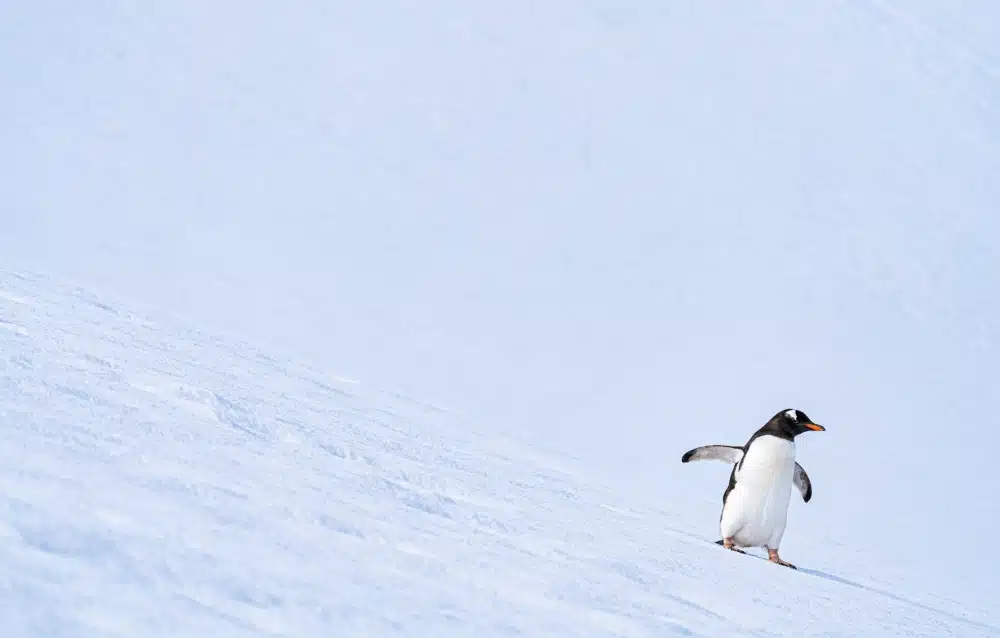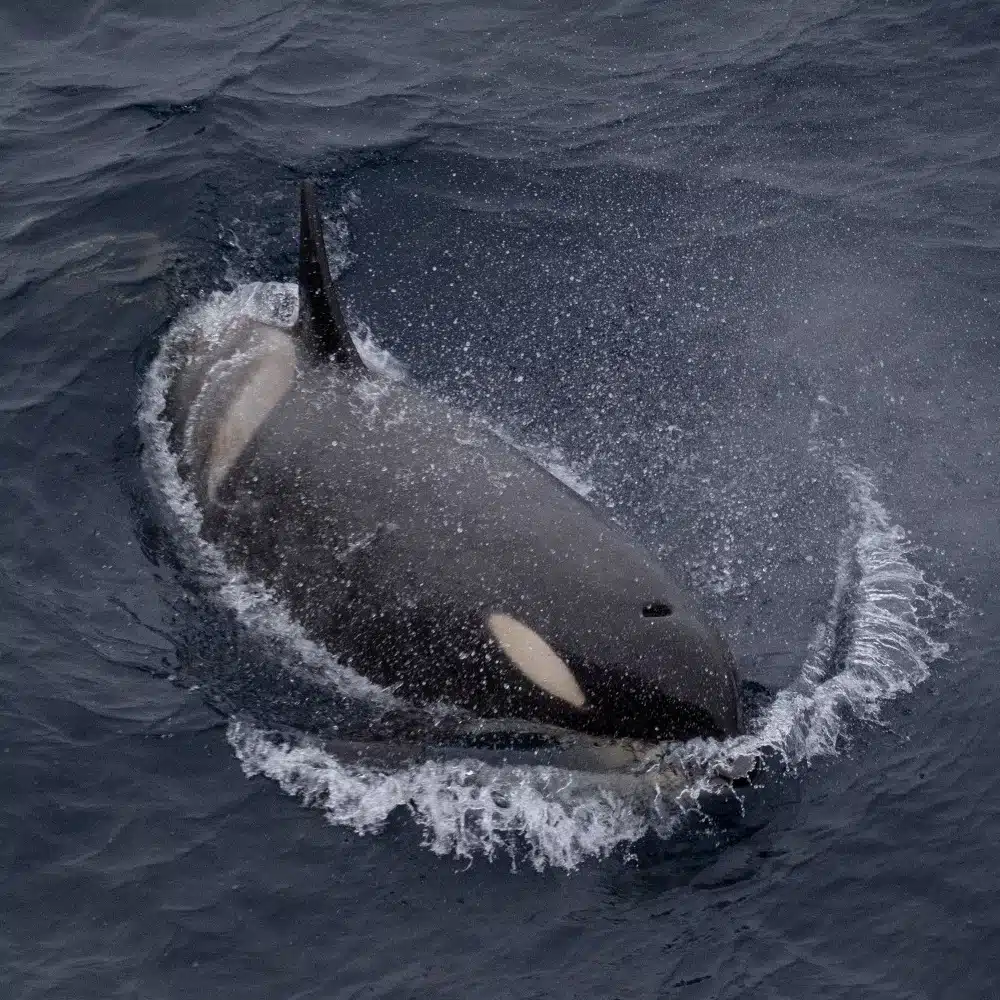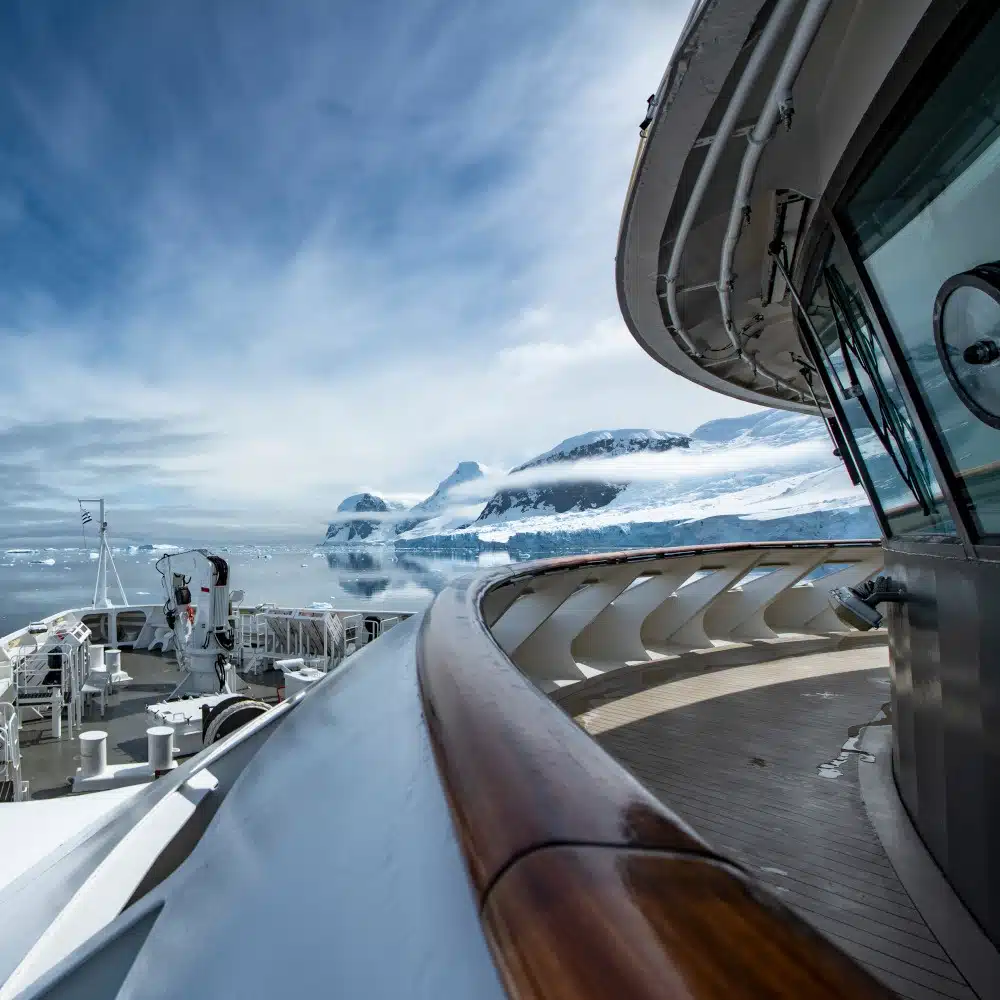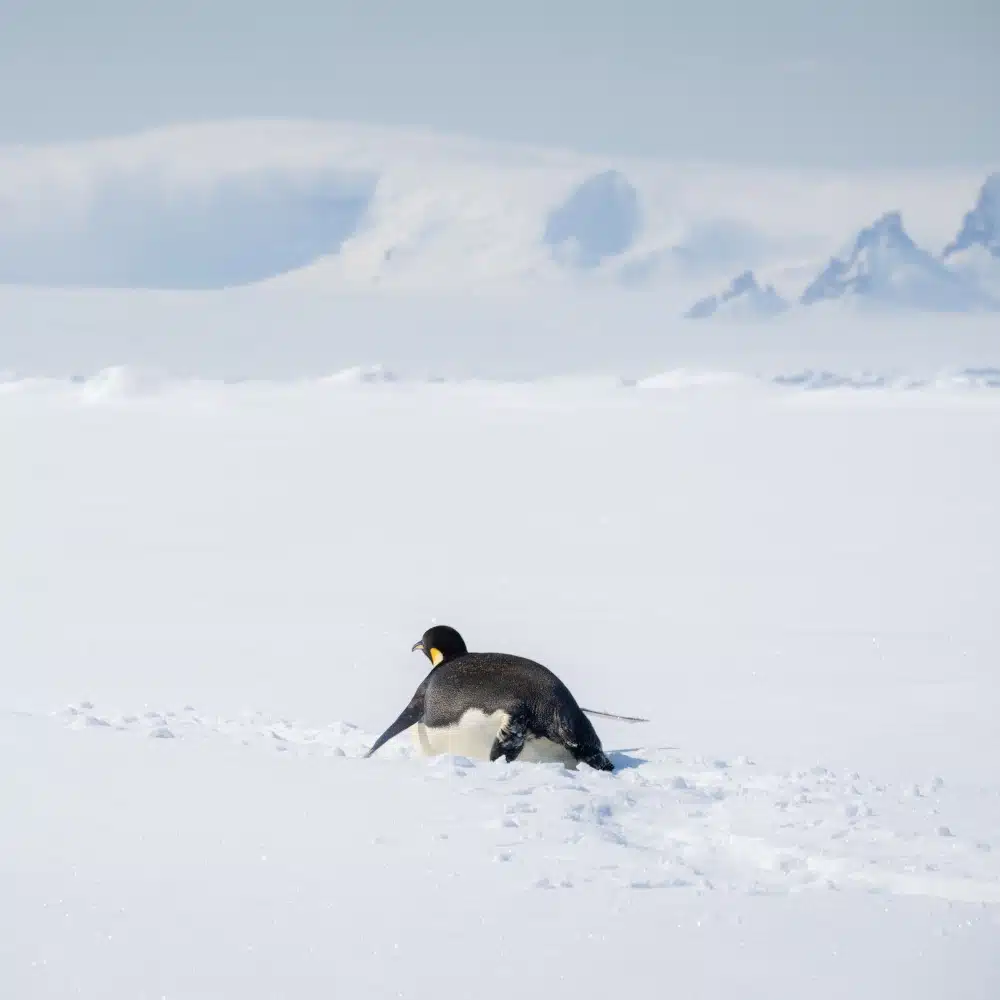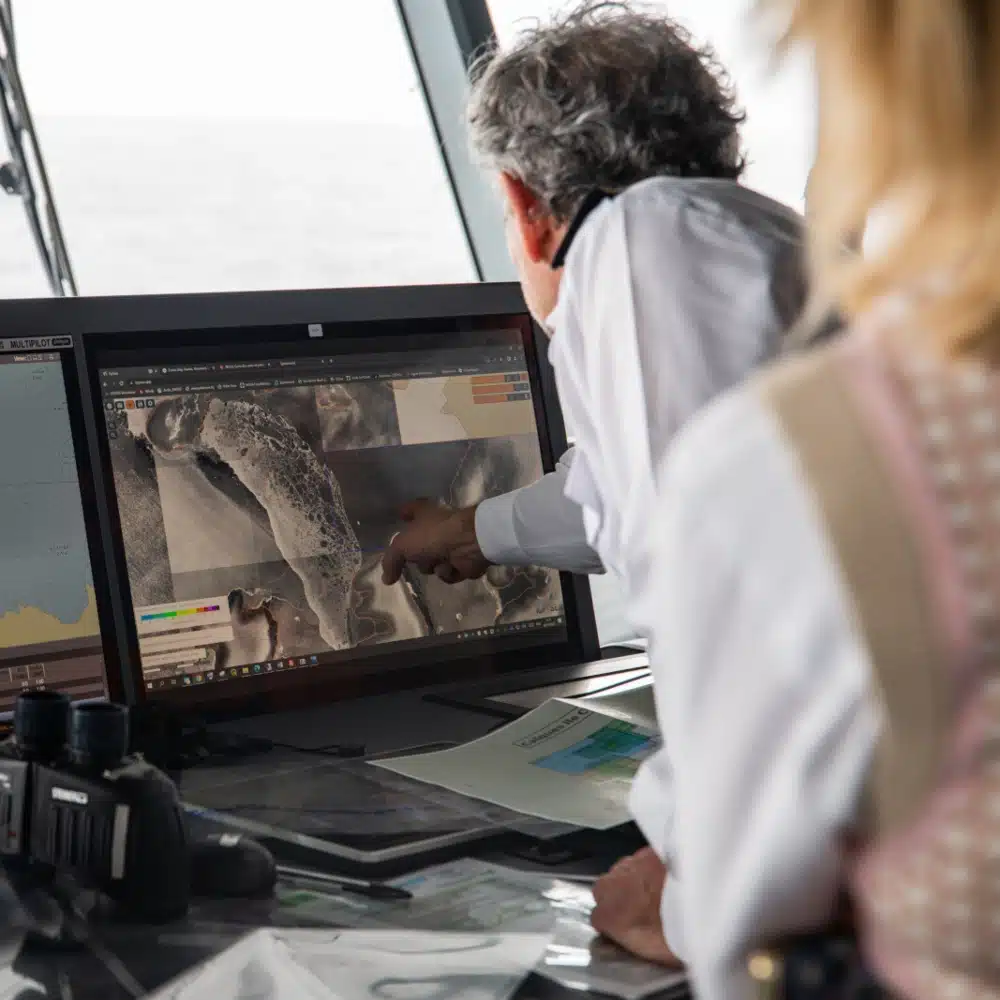Antarctica is the stuff of travelers’ dreams. PONANT helps you explore the unspoiled continent in luxurious comfort. And on our January 2024 Antarctica expedition on Le Commandant Charcot, we’ve invited renowned scientists Dr. Cassandra Brooks and Dr. Ulyana Horodyskyj Peña of The Explorers Club along to bring this white wilderness to vivid life. Exploring its stunning landscapes and remarkable wildlife with them, you won’t believe that for most of history, this spellbinding land lived only in the imagination.
As far back as the second century AD, long before humans charted the globe, the idea that a land mass covered the earth’s southernmost reaches captivated the great thinkers of the ancient world. Back then, mathematician, astronomer, and geographer Ptolemy believed that the lands of the Northern Hemisphere must be balanced by a land mass in the south.
Marine biologist and The Explorers Club member Dr. Cassandra Brooks loves this metaphor, particularly as it applies to her work in preserving the oceans around today’s Antarctica. “There’s a lot of truth to the idea that the world will topple over were it not for the weight of Antarctica,” she says. “Its ecosystem in general, and the ecosystem of the Southern Ocean in particular, are vital to the world’s survival.”
In Ptolemy’s day, that theoretical “counterweight” was called Terra Australis, Latin for “southern land.” Others knew it by a more intriguing name, Terra Australis Incognit, or “unknown land of the south.”
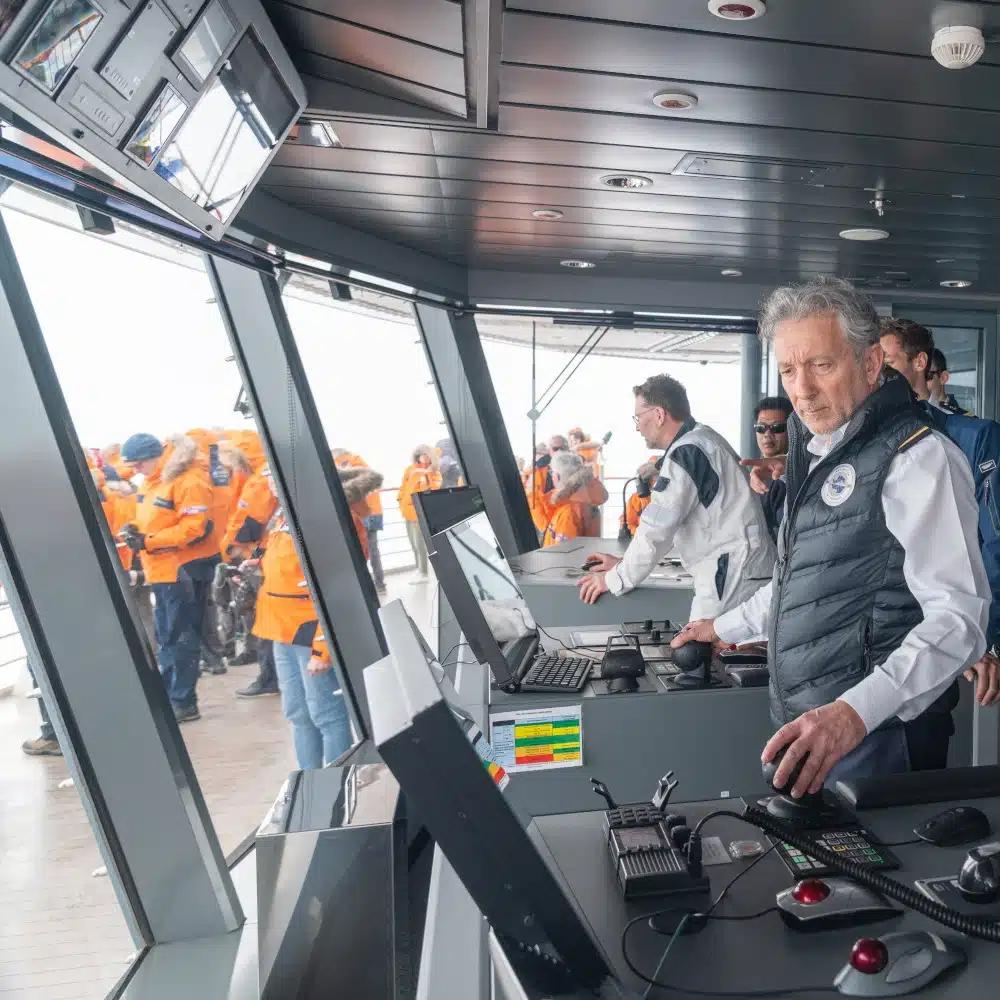
The Search for a Lost Continent
Ptolemy’s ideas were embraced long into the Renaissance era, ignoring the possibility of a Southern Ocean altogether. In fact, maps of the day depicted Africa without a southern coast. Rather, it stretched all the way to the South Pole, merging with a mass of land that cradled the world. In those drawings, Terra Australis looked a bit like an egg cup, with the globe its egg.
In the middle of the Renaissance, at the end of the 15th century, the Age of Discovery took hold. With so many ships sailing to all ends of the earth, one might think that solving the problem of Terra Australis was close at hand. For instance, in 1497, Vasco Da Gama sailed around the Cape of Good Hope, revealing that Africa was not linked to a southern land mass. Surprisingly, this didn’t open the way to Terra Australis. Voyage after voyage set out to find the unknown land, funded by the deep pockets of their Crowns. But the mystery-continent proved elusive.
The search became a bit like the childhood game of “pin the tail on the donkey.” Explorers triumphantly wrote in their logs and geographic treatises of sailing along the coast of the lost continent. But – history now shows us – they consistently missed the target. Instead, they had found Patagonia at the mouth of the Rio de la Plata, the river that today separates Uruguay and Argentina; they stumbled on New Guinea in the East Indies; they came upon the massive land mass that we know today as Australia, and its neighbor, New Zealand.
Mapmakers of the day tried to keep up. In this fascinating chapter in cartographic history, Terra Australis expanded and shrank – on the page and in the imagination – as more discoveries were made and discredited.
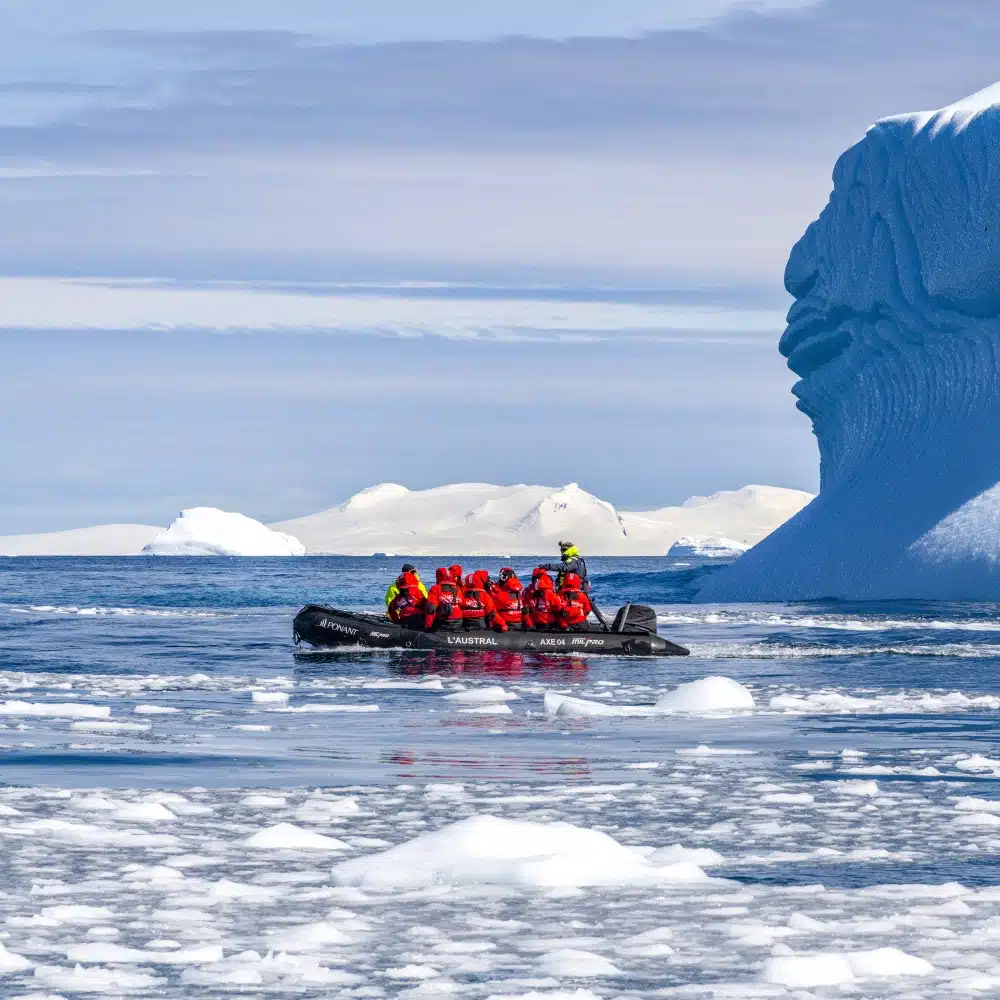
Terra Australis Becomes Real
Could Terra Australis be nothing more than a geographic fiction conjured by the world’s great thinkers and scientists? By the 18th-century, advances in navigation and technology – not to mention colonization – had proved every previous “discovery” wrong. Meanwhile, Scottish hydrographer Alexander Dalrymple was utterly certain the southern land was out there. He convinced the Royal Society of England to sponsor renowned explorer James Cook to find it once and for all. Cook set sail in 1772.
Cook never saw the continent, but he felt it. And he heard it. He sailed farther south than he could have imagined was possible, only to be swallowed by dense fog and encountering pack ice. He wrote of hearing the call of strange birds in the eerie cover – likely penguins. Spooked, Cook turned around. But he finally solved the mystery: There was a land mass at the bottom of the world.
Others followed. Russian commander Fabian Gottlieb von Bellingshausen and his American comrade Nathaniel Palmer. Irish lieutenant in the British Royal Navy Sir Edward Bransfield and his pilot William Smith. Another Royal Navy man, captain James Weddell. Famously, the Shackleton expedition.
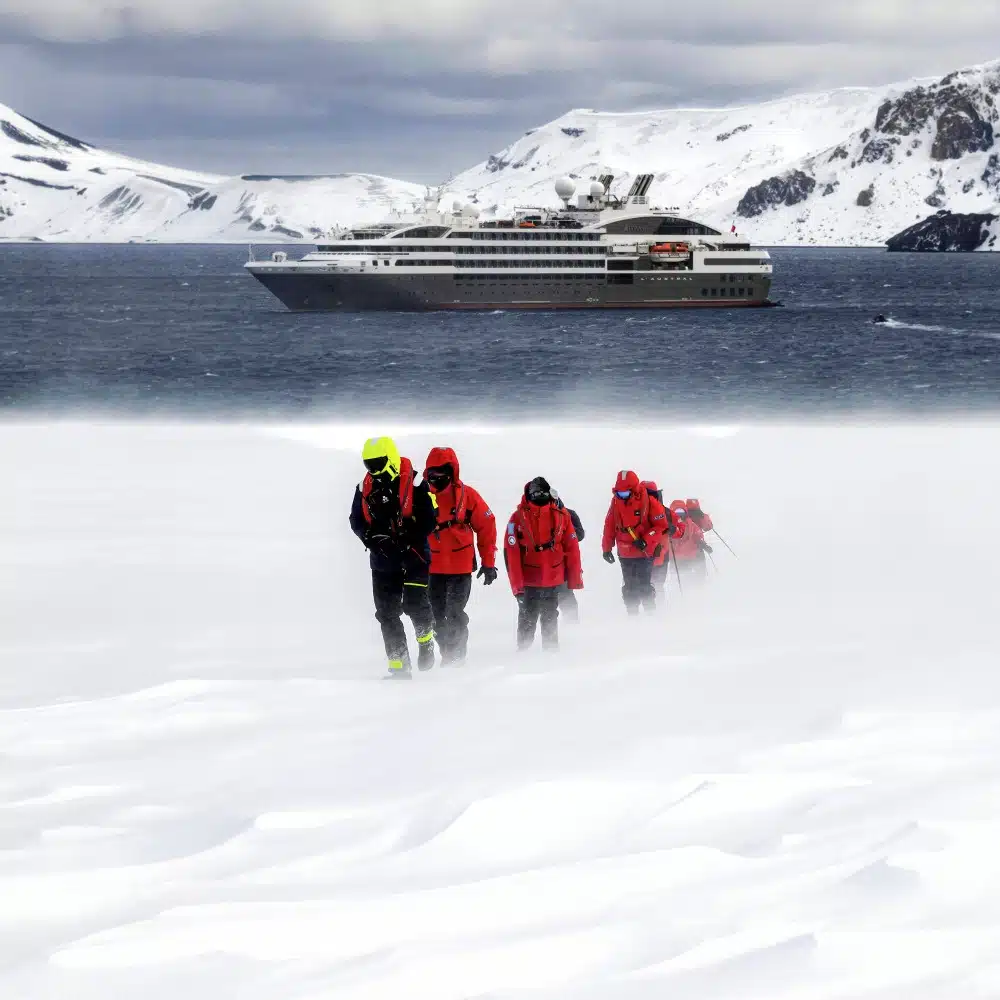
Since, Antarctica has ascended from the “unknown land of the south” into the realms of adventure and scientific inquiry. PONANT and The Explorers Club members Dr. Cassandra Brooks and Dr. Ulyana Horodyskyj Peña very much look forward to sharing it with you as you take your place in the history of Terra Australis – the magnificent white wilderness of Antarctica.
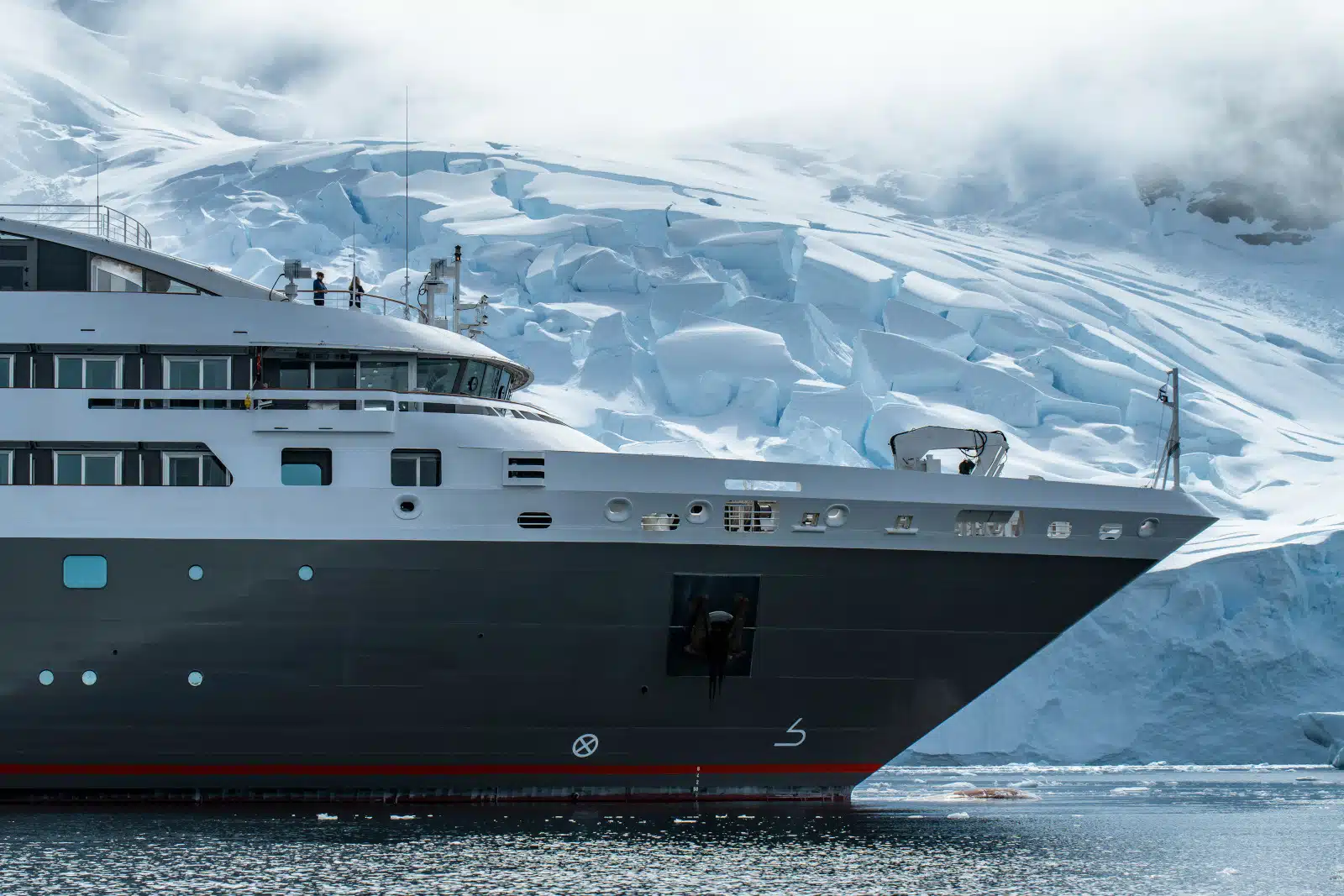

Join us in Antarctica
Join us on an unexplored Antarctica cruise between two continents.

